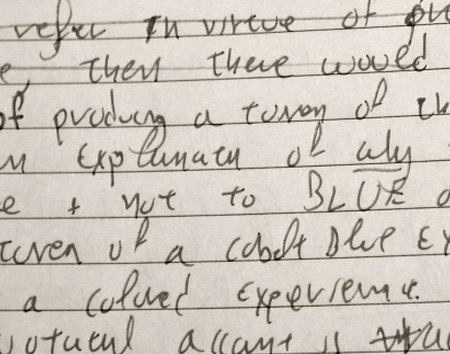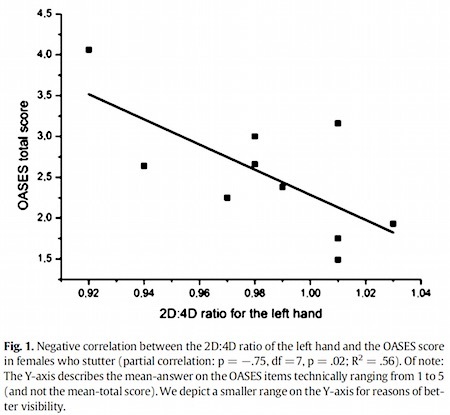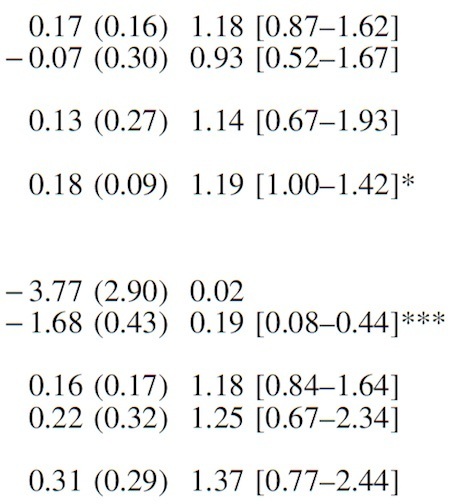Marc Abrahams's Blog, page 359
December 7, 2014
A Theoretically Interesting Opinion About Boredom
You may, depending on your boredom threshold, find this study to be of little interest:
“The bright side of boredom,” Andreas Elpidorou, Frontiers in Psychology, November 3, 2014. (Thanks to investigator Neil Martin for bringing this to our attention.) The author, at the University of Louisville, Louisville, Kentucky, explains:
“I wish to suggest that one is prone to boredom not only if one possesses characteristics that make one susceptible to being bored, but also if one frequently experiences boredom…”
BONUS: Here is a portion of a document that has been displayed, and this is presumably of interest to, Andreas Elpidorou:
December 6, 2014
The human genome and the immortality of television sets
The ENCODE project (its stated goal is “to identify all functional elements in the human genome sequence“) has attracted much criticism. Dan Graur, a member of the Luxuriant Former Hair Club for Scientists (LFHCfS), and his colleagues made hearty contributions to that river of criticism:
“On the immortality of television sets: ‘function’ in the human genome according to the evolution-free gospel of ENCODE,” Dan Graur, Yichen Zheng, Nicholas Price, Ricardo BR Azevedo, Rebecca A. Zufall, and Eran Elhaik, Genome Biology and Evolution, vol. 5, no. 3, 2013, pp. 578-590. The authors write:
A recent slew of ENCyclopedia Of DNA Elements (ENCODE) Consortium publications, specifically the article signed by all Consortium members, put forward the idea that more than 80% of the human genome is functional. This claim flies in the face of current estimates according to which the fraction of the genome that is evolutionarily conserved through purifying selection is less than 10%. Thus, according to the ENCODE Consortium, a biological function can be maintained indefinitely without selection….
“I would be quite proud to have served on the committee that designed the E. coli genome. There is, however, no way that I would admit to serving on a committee that designed the human genome. Not even a university committee could botch something that badly.” —David Penny (personal communication) …
“The onion test is a simple reality check for anyone who thinks they can assign a function to every nucleotide in the human genome. Whatever your proposed functions are, ask yourself this question: Why does an onion need a genome that is about five times larger than ours?” —T. Ryan Gregory (personal communication) …
The absurd alternative, which unfortunately was adopted by ENCODE, is to assume that no deleterious mutations can ever occur in the regions they have deemed to be functional. Such an assumption is akin to claiming that a television set left on and unattended will still be in working condition after a million years because no natural events, such as rust, erosion, static electricity, and earthquakes can affect it. The convoluted rationale for the decision to discard evolutionary conservation and constraint as the arbiters of functionality put forward by a lead ENCODE author (Stamatoyannopoulos 2012) is groundless and self-serving.
December 5, 2014
Professor Bender’s Kissing Goodbye Algorithm
“Given a rectangular room with n people in it, what is the most efficient way for each pair of people to kiss each other goodbye?“
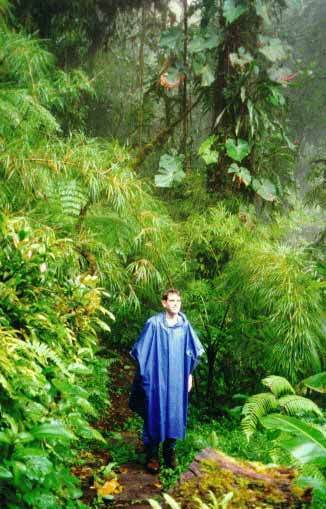 Professor Bender, (pictured, of the Department of Computer Science, Stony Brook University, New York) along with his colleagues Ritwik Bose, Rezaul Chowdhury and Samuel McCauley, have made progress towards an answer. Their paper, presented as a chapter in Fun with Algorithms, Lecture Notes in Computer Science, Volume 7288, 2012, pp 28-39 is entitled : ‘The Kissing Problem: How to End a Gathering When Everyone Kisses Everyone Else Goodbye‘
Professor Bender, (pictured, of the Department of Computer Science, Stony Brook University, New York) along with his colleagues Ritwik Bose, Rezaul Chowdhury and Samuel McCauley, have made progress towards an answer. Their paper, presented as a chapter in Fun with Algorithms, Lecture Notes in Computer Science, Volume 7288, 2012, pp 28-39 is entitled : ‘The Kissing Problem: How to End a Gathering When Everyone Kisses Everyone Else Goodbye‘
It provides one Boustrophedon algorithm for kissing everyone goodbye – providing they are in a room that is rectangular.
“This paper considers kissing only in rectangular rooms. How quickly can a gathering break up in a less austere environment than a rectangle? What about rectilinear polygons, possibily [sic] with holes (to model those parties where people don’t stand on furniture)?
The boustrophedon algorithm presented here is likely to have better approximation ratios than this paper proves. Could some nontrivial version of the algorithm even be optimal? The complexity of kissing problem remains open for any environment.”
The paper may be found, in full, here.
Also see: Kissing Inclinations, Amsterdam
December 4, 2014
Subtle insights from comparing someone’s finger lengths: Stuttering
There’s yet another demonstration of the subtle insights you can get from comparing the lengths of a person’s second finger and fourth finger.
A new finger-comparison study extends the tradition established by the father of finger ratios, Professor John T. Manning:
“Prenatal testosterone and stuttering,” Christian Montag [pictured here, wearing a coat], Benjamin Bleek, Svenja Breuer, Holger Prüss, Kirsten Richardt, Susanne Cook, J. Scott Yaruss, Martin Reuter, Early Human Development, Volume 91, Issue 1, January 2015, pp. 43–46. The authors, at the University of Ulm, the University of Bonn, and the University of Pittsburgh, explain:
“We searched for differences in the 2D:4D ratios between 38 persons who stutter and 36 persons who do not stutter. In a second step, we investigated potential links between the 2D:4D ratio and the multifaceted symptomatology of stuttering, as measured by the Overall Assessment of the Speaker’s Experience of Stuttering (OASES), in a larger sample of 44 adults who stutter….
“In the first step, no significant differences in the 2D:4D were observed between individuals who stutter and individuals who do not stutter. In the second step, 2D:4D correlated negatively with higher scores of the OASES (representing higher negative experiences due to stuttering), and this effect was more pronounced for female persons who stutter.”
A summary for laypersons: The study suggests that knowing the relative lengths of someone’s fingers tells you nothing about whether that person is likely to stutter. The study also suggests that if that person happens to be a stutterer — and if that person is a she —then measuring the relative lengths of her fingers might (though the statistics are iffy) hint at how much she might suffer because of her stuttering, compared with other women who stutter but have different relative finger lengths.
Here’s further detail from the study — a graph concerning the ten (10) stuttering females whose relative finger lengths were examined by Christian Montag, Benjamin Bleek, Svenja Breuer, Holger Prüss, Kirsten Richardt, Susanne Cook, J. Scott Yaruss, and Martin Reuter:
December 3, 2014
Consumption of Pornography, Sexting Behavior, a Publication
This study was published, possibly for some reason:
“The Associations Between Adolescents’ Consumption of Pornography and Music Videos and Their Sexting Behavior,” Joris Van Ouytsel [pictured here], Koen Ponnet, and Michel Walrave, Cyberpsychology, Behavior, and Social Networking, Volume 17, Number 12, 2014. The authors, at the University of Antwerp and Universite Libre de Bruxelles, Belgium, reach this conclusion:
“The results of our study show that various types of sexting behavior are significantly linked with both pornography and music video consumption.”
The study includes numbers. Here are some of them:
(Thanks to investigator Ivan Oransky for bringing this to our attention.)
24/7 Lectures get their own webpage
Since 2001, the Ig Nobel Prize Ceremony has included the 24/7 Lectures, in which some of the world’s top thinkers each explained a concept in two ways:
First, a complete, technical description in 24 seconds, and then, a clear summary that anyone can understand in 7 words.
Now all the 24/7 Lectures are collected, together in one place.
You can see the lecture texts, as well as notes, a link to the video of each lecture, and the a count of the actual number of words used in the clear 7-word summary.

24/7 Lecturers: Benoit Mandelbrot (fractals), Rebecca German (morphology), Carol Greider (telomeres), and Richard Jakowski (purring).
There have been over 60 Lectures since this program began in 2001. The lecturers have included Nobel Laureates, Professors, Authors, and Inventors. The List of topics explained in 24 seconds and then in 7 words has included Statistics, Dark Matter, Income Inequality, Vaginal pH, Genius, Cryptography, The Genome, and The Possibility of Arsenic Based Life In Our Universe.
“Whoever restrains his words has knowledge.” - Book of Proverbs
“Long life should be longer. Speech should be short.” - Dr. Yoshiro Nakamats
The webpage also includes a precursor to the 24/7 Lectures: The Heisenberg Certainty Lectures. These lectures, a featured part of most of the early Ig Nobel Prize ceremonies, were each 30 seconds long, written and performed by many Nobel Laureates. Each Heisenberg Certainty lecturer could talk about whatever they wanted — but were strictly limited to those 30 seconds. The time limit was enforced by referee John Barrett. The ranks of Heisenberg Certainty Lectures included Car Talk hosts Tom & Ray Magliozzi, the president of Bijan Fragrances, the chair of the Harvard Astronomy Department, and other luminaries.
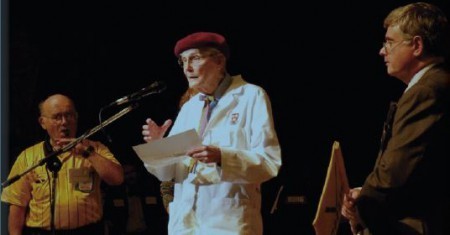
Referee & V-Chip Monitor audit Nobel Laureate William Lipscomb’s 24/7 Lecture, at the 2008 Ig Nobel Prize ceremony.
Dropped red herring attacks
 The ‘Dropped Red Herring Attack’ was first (Improbable believes) described by Professor Brad Karp (pictured right) and colleagues Dr. James Newsome and Professor Dawn Song in their paper for Proceedings of the 9th International Symposium On Recent Advances In Intrusion Detection (RAID 2006), entitled: ‘Paragraph: Thwarting signature learning by training maliciously’.
The ‘Dropped Red Herring Attack’ was first (Improbable believes) described by Professor Brad Karp (pictured right) and colleagues Dr. James Newsome and Professor Dawn Song in their paper for Proceedings of the 9th International Symposium On Recent Advances In Intrusion Detection (RAID 2006), entitled: ‘Paragraph: Thwarting signature learning by training maliciously’.
“In the Dropped Red Herring attack, the attacker again chooses a set of spurious features. Initially, he includes all features in every target-class sample. As a result, the target-class samples in the learner’s malicious training pool will all have all spurious features, and all spurious features will be included in the signature. Once the signature is in place, all the attacker needs to do to evade the signature is to stop including one of the spurious features in subsequent target-class sample. The signature will have a 100% false negative rate until the learner sees a target-class sample missing the spurious feature, and deploys an updated signature that no longer requires that feature to be present. At that point, the attacker stops including another spurious feature. The cycle continues until the attacker has stopped including all of the spurious features.”
Since its description, a number of other computer-network-science researchers have examined its implications, see, for example :
• Thwarting zero-day polymorphic worms with network-level length-based signature generation
and
• Network-based and Attack-resilient Length Signature Generation for Zero-day Polymorphic Worms
and
• LISABETH: automated content-based signature generator for zero-day polymorphic worms
Bonus [1]: Dr. Newsome has developed ‘The Piranha Tank Game’
Bonus [2]: Monty Python developed ‘The Fish Slapping Dance’
Bonus [3]: “The Disappointing Reality of Musical Fish”
Bonus [4]: A fish driven car:
December 2, 2014
Reduced Pleasant Touch Appraisal in the Presence of a Disgusting Odor
Here, a study about a disgusting odor, with a distinct touch:
“Reduced Pleasant Touch Appraisal in the Presence of a Disgusting Odor,” Ilona Croy [pictured here], Silvia D’Angelo, Håkan Olausson, PLoS One, epub March 24, 2014. (Thanks to investigator Carmen Nobel for bringing this to our attention.) The authors, at the University of Gothenburg, Sweden, report:
“Forty-five healthy participants (mean age 23.3 +/− 3years SD, 24 females) were presented to slow (3 cm/s) and fast (30 cm/s) brush stroking delivered by a robot to the forearm. Touch pleasantness under the influence of an unpleasant odor (Civette, smelling like feces) and an intensity matched pleasant odor (Rose) was compared to an odorless control condition…. The unpleasant odor decreased touch pleasantness for both stroking velocities compared to the odorless control (p

December 1, 2014
Medical report: “A Real Airhead”
Some, alas not all, doctors strive for plain language. The headline of this medical report contains plain language:
“A Real Airhead,” Declan McDonnell and Gillian Park, BMJ Case Reports, epub November 25, 2014. The authors, at Southampton General Hospital and Northwick Park Hospital, London, UK, report:
“A 21-year-old man was taken to the emergency department after having fainted. He had hit his head and lost consciousness for a few seconds, and his friends witnessed a shaking episode during this time, although there was no tongue biting or incontinence. He sustained a small laceration above his left eye following the fall. On presentation, he had a worsening headache, felt dizzy and had anterograde amnaesia. Examination was otherwise unremarkable. Given the symptoms, it was decided to perform a CT scan of the head, which showed a marked pneumocephalus, the presence of air inside the head (figure 1).”
This is figure 1:

Proud, knowledgeable, pointed bogosity at BAHfest
Angela Chen visited BAHFest, and filed this report in the Wall Street Journal:
At This Conference, Scientists Spout Bogus Theories on Bugs, Yawns and Belly Fat
That’s the goal of BAHFest, a satirical conference where researchers offer fake theories supported by real scientific evidence
CAMBRIDGE, Mass.—At a recent scientific conference here, Justin Werfel [pictured below not at BAHfest], a Harvard University researcher who has studied termites in Africa, described to the crowd his theory on why bugs are so disgusting.
It is all about evolution, Dr. Werfel said. Increased competition among humans for food drove bugs to become ever more disgusting to keep people from eating them, he said.
Dr. Werfel used standard scientific methodology to develop his theory. His goal wasn’t to break new ground in entomology. It was to take top place at the Festival of Bad Ad-Hoc Hypotheses, or BAHFest, a satirical conference on evolutionary biology held at the Massachusetts Institute of Technology.
Six presenters, each armed with reams of research, vied to win over a panel of judges with a different bogus scientific theory.…

Marc Abrahams's Blog
- Marc Abrahams's profile
- 14 followers


